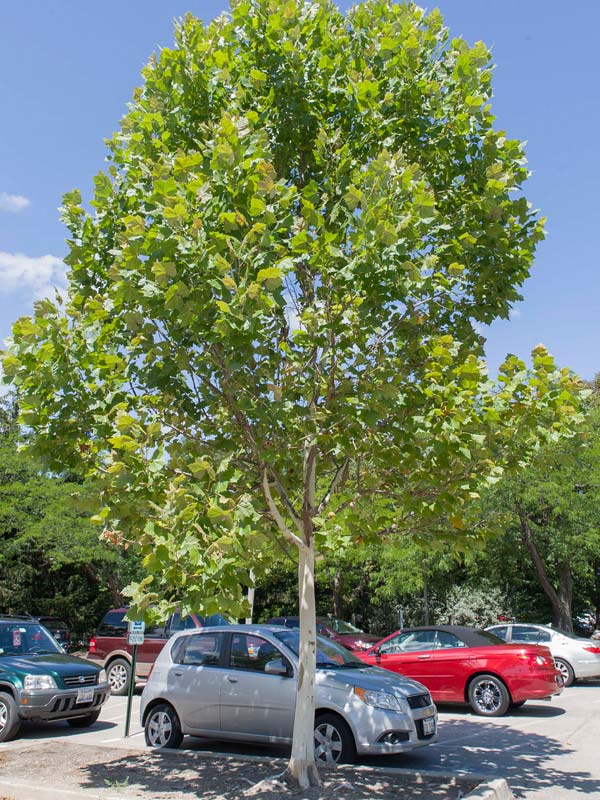Platanus × acerifolia
About 100 -year-old London plane (Platanus × hispanica) in front of the railway station of Wiesbaden
The London plane, sycamore bastard, common sycamore, hybrid sycamore or London plane (Platanus × hispanica, synonym P. × acerifolia, Platanus × hybrida ) is a tree species from the family of plane trees plants ( Platanaceae ). It was formed in 1650 by a hybrid of the American sycamore ( P. occidentalis) and Oriental plane ( P. orientalis). In contrast to the oriental parent it is very hardy.
Due to their leaf shape, the London plane is often mistaken for a maple.
Description
The London plane reaches a height of up to 45 meters. The tree crown is high and wide in older specimens. The bark of young trees is dark gray to brown. With age, the bark peels off in thin plates, the younger bark underneath is yellow- gray.
The leaf buds are ovoid, reddish brown and 6-8 mm long. The fresh leaf shoots is light brown to gray- green and hairy, but verkahlt quickly. The maple leaves are similar; they are up to 15 to 25 inches tall and usually five-lobed. Size and shape of the lobes may vary depending on the clonal line. The petiole is 5 to 10 cm long. Serrated, ovate stipules remain especially in young trees longer adhere to the leaf base.
The flowers appear with the leaves in May. They are usually in pairs on flower catkins with a 6 to 8 inch long stem. The male flowers are greenish yellow and small; the female flowers are carmine. The flowers grow in about 1 cm large part inflorescences and hang out with two or three buds on a common inflorescence axis. The collecting fruit is spherical, brown and about 3 inches tall; it depends on a long stalk. The individual fruits are angular - cylindrical nutlets that contain the seeds.
The London plane has the chromosome number 2n = 42
There are over 300 years old specimens are known that are still growing strong.
Use
The nature tolerated by gases polluted air and is considered insensitive to compacted soils. In many European countries it is therefore a very popular street tree.
Diseases and Pests
The London plane is relatively rarely attacked by diseases. In the spring, sometimes takes the fungal species Gnominia veneta (synonyms: Apiognomonia veneta, Gloeosporium nervisequum ) on; infected with the fungal disease young shoots die off. For some years also occurs the Massariakrankheit in Germany.
Cultivated forms
- Suttneri: This form has white variegated leaves, some of which are quite white inside of the crown. The form is very rare; it can reach heights of growth to 22 meters.
The commercially available so-called roof plane trees have an unusual shape of the crown, which is achieved by a special topiary. Here, the main trunk of young trees is shortened and the remaining side branches by means of a scaffold (usually made of bamboo sticks ) and bonds forced into a horizontal growth habit.










